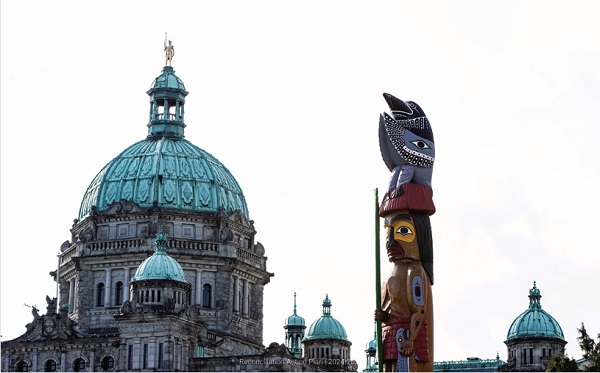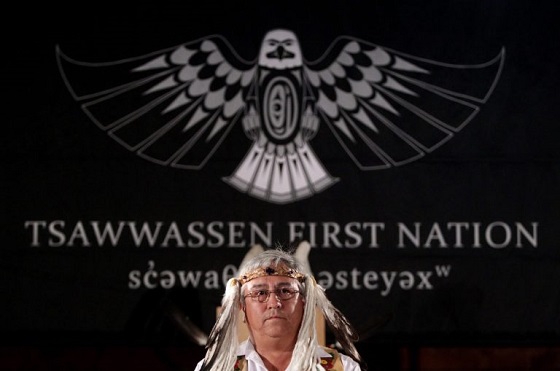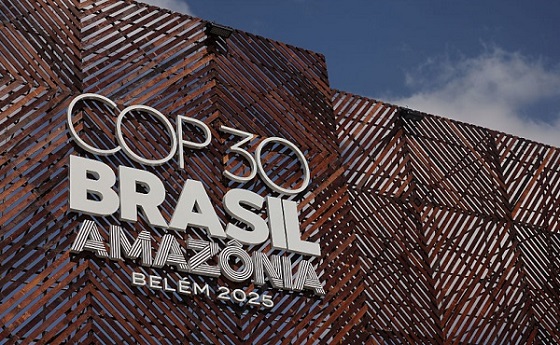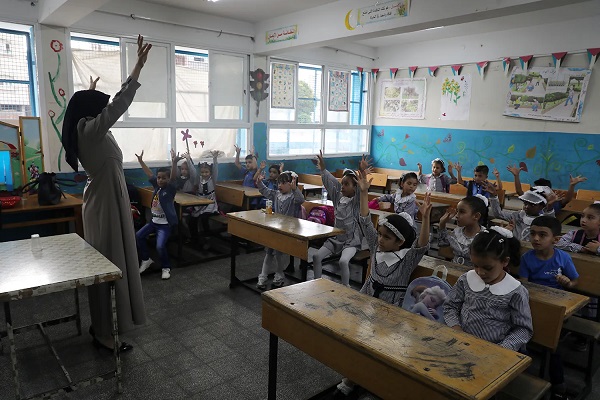Indigenous
Canada’s Indigenous Model is Not Sustainable

From the Frontier Centre for Public Policy
The stated purpose of the extra indigenous spending that has always been there, and the virtual explosion on indigenous spending since 2015 is meant to fix that problem. But these massive expenditures have now reached the point where they risk destabilizing the country.
Canada’s parliamentary budget officer, Yves Giroux has spoken out about the alarming rise in Canada’s contingent liabilities related to indigenous claims. Todays estimated 76 billion dollars is many times the 15 billion dollars it was when the Liberals took power in 2015.
This is one part only of the massive increase in spending on indigenous matters that has taken place since then.
Federal spending per indigenous person has always been much higher than spending per non-indigenous person. The higher level of spending has been justified because most indigenous people do much worse on virtually every health and social indicator than the mainstream population. Their health is poorer, and their lives are shorter.
This disparity was generally known as Canada’s “Indian problem”. That term is no longer fashionable, and the extra spending is now said to be necessary to achieve “reconciliation”. Regardless of the terms, what is clear is that since Confederation there has always existed a large rural and urban indigenous underclass that does poorly compared to the mainstream. The stated purpose of the extra indigenous spending that has always been there, and the virtual explosion on indigenous spending since 2015 is meant to fix that problem. But these massive expenditures have now reached the point where they risk destabilizing the country.
Perhaps it’s time for Canadians to ask if the “nation to nation” reconciliation plan that spending is based on is working. Is it fixing the problem?
A recent CBC report proves that it is not. Instead, the problems are getting worse.
The CBC investigated an indigenous community at St. Theresa Point where 24 people sometime share one house. Almost all of the houses in the community are crumbling and need to be replaced. Families struggle to achieve basic hygiene. Living conditions resemble what one would expect to find in a third world community, and not in wealthy, modern Canada.
St. Theresa Point is typical of hundreds of other Indian remote reserves. Most are almost totally dependent on the federal government for their survival. There is virtually no real employment. The poorest people in those communities are directly dependent on welfare checks, but even the chief, councillors and other employees receive their paycheques from the transfer payments sent by Ottawa. In reality almost everyone in the community is on welfare of some type.
Unlike in other rural communities, people on poor reserves tend not to move when economic opportunities decline. In small-town Canada, the rules are simple: If the towns or farms can’t supply enough jobs, one moves to the city where the jobs and careers are. But on remote reserves, most people stay put, even if there are no jobs or careers there for them. And most of those who do move to the city do not do well. A lack of education, poor job skills, and lack of motivation usually consign reserve residents who move to the mean parts of town where many end up in gangs, crime and prostitution. The result is that the people who stay in uneconomic remote reserves become more and more dependent. Low education levels sink even further. And succeeding generations become ever less likely to be able to provide for themselves and their families.
To make matters much worse, addiction problems are endemic. At one time, alcohol was the drug of choice. Now, amphetamines, fentanyl, and prescription drugs have been added to the list, with the family violence, sexual abuse, crime, teenage pregnancy and fetal alcohol births that inevitably follow from chronic drug use.
And reserve populations are growing. Although status Indians living on reserves currently comprise only about 1% of the total population, they are the country’s fastest growing demographic. The cost of operating these communities is crippling now, but in a few years, it will be completely unsustainable. Pretending that these desperately poor reserves are sovereign “nations” that will somehow magically become prosperous and self-supporting is a cruel joke on the young people hopelessly trapped on them. The prospect of hundreds of dependent reserves teeming with, unemployed, and largely unemployable young people, with massive social problems, is a frightening dystopia – hundreds of Gaza strips. But it is where we are headed. To make things even worse, the government-promoted false genocide and “missing children” narratives have made many of these people very angry.
Although there is no treaty right, or any other right to free housing on a reserve the reality is that if the government did not provide housing for the reserve residents, they would be unable to provide housing for themselves. The strange result is that Canadian taxpayers – many of whom will never be able to afford to buy a house themselves – pay through their tax dollars for houses for the rapidly growing reserve population. These houses deteriorate quickly, because they are considered “free” by the residents, and have to be fixed and replaced in a wasteful and expensive cycle.
And it is a national disgrace that most reserves are dead ends for most of the young people born into them.
The late Farley Mowat described northern indigenous settlements as “unguarded concentration camps”. That might be a somewhat harsh way to describe reserves, but at best most are human warehouses, plagued with social problems. The young people living there deserve some hope, and Canada’s current plan for them offers them none.
So, Canada’s current indigenous plan is clearly not working. Is there a better plan for success?
Maybe we should ask Wab Kinew, Manitoba’s new premier. He is indigenous and highly successful. How did he get there?
The formula is actually not complicated. It has nothing to do with massive welfare giveaways, “nation to nation” utopias, or incredibly expensive “reconciliation” projects. It definitely has nothing to do with staying in a community that lacks economic opportunities, and waiting for handouts. It involves education, hard work, and going where the jobs are. Kinew’s parents realized that a stable home and education were key. Wab did the rest. He worked his way up the ladder in the usual way, and went where the jobs were. He did that with his indigenous identity intact.
Not every young person has Kinew’s talent, but everyone can follow the formula that made Kinew, and many other indigenous achievers successful.
The alternative – spending ever increasing amounts on a steadily increasing list of demands from a growing dependent reserve population is not an option. We don’t need the parliamentary budget officer to tell us that it is not sustainable.
As for remote, uneconomic reserves, like St. Theresa Point, they should be gradually and humanely closed down. It has been recognized for many years that reserves long ago had served their purpose, and should be phased out. As far back as 1911, it was said:
“Department officials were increasingly coming to the view that reserves had outlived their usefulness. Frank Pedley suggested that they resulted in the isolation and segregation of Indians, and thereby hindered progress…and encouraged the tribal form of government.”
The reserve system was not ended in 1911 because the chiefs and ruling families refused to give up their privileged positions. It isn’t happening today for the same reasons. We still have the same Indian Act and reserve system that has held indigenous people back for almost 150 years. (Senior Ontario lawyer, Peter Best, describes the toxicity of the reserve system in his important book, There Is No Difference)
So, the long-term plan should be to find a way to overcome that resistance, and find a fair way to phase out reserves, and the antiquated Indian Act. The reserves that are economically viable can merge into existing rural municipalities, or become stand-alone municipalities. Opportunities should be made available for young people from uneconomic communities to move to job centres, and receive help to succeed there.
In the meantime, the example of Wab Kinew is proof that there has never been a better time or place than today’s Canada to be an educated and ambitious young indigenous person who is willing to study, work hard, and go where the jobs are.
Brian Giesbrecht is a retired judge and senior fellow at Frontier Centre for Public Policy
Watch Brian on Return to Reason here.
Aristotle Foundation
The extreme ideology behind B.C.’s radical reconciliation agenda

BC government advisors believe ‘settlers’ must atone for Canada’s ‘original sin’
British Columbians are understandably perplexed as to why their provincial government is going headlong down an economically devastating, undemocratic and divisive “reconciliation” path that is so obviously counter to the public interest.
But the reason is simple, and it’s in plain view for anyone who cares to look. Premier David Eby has surrounded himself with advisors who fervently believe in a radical ideology that sees the drastic reshaping of our society as a moral imperative.
One advisor has even suggested that Canada’s formation is analogous to an “original sin,” and his recipe for redemption demands — in his own words — turbulence, rupture, sacrifice, pain, and the utter transformation of human affairs.
Understanding this alarming worldview is necessary for anyone concerned with where things are headed on the reconciliation front.
In early November, Eby came as close as he’s ever been to revealing the “original sin” mentality behind his agenda, stating in a video that changes resulting from B.C.’s Declaration on the Rights of Indigenous Peoples Act (DRIPA) are “about correcting that original colonial mistake.”
This isn’t just a passing remark. It’s a tip of his hand exposing a disconcerting philosophy long held and frequently expressed by his hand-selected reconciliation advisors.
Doug White and Dr. Roshan Danesh both played key roles in expanding B.C.’s Indigenous policies.
White serves Eby directly as special counsel to the premier on reconciliation, providing guidance on Indigenous policy and the implementation of DRIPA, which is the B.C. government’s enabling legislation that gets its framework from the United Nations Declaration on the Rights of Indigenous Peoples (UNDRIP).
Danesh served the government as a facilitator on reconciliation and wrote the report upon which the province’s interim approach to implementing DRIPA’s section 3 was based (this is a crucial section that requires the province to take “all measures necessary” to ensure consistency between the laws of B.C. and UNDRIP).
In addition, both White and Danesh have been officially acknowledged for playing an “absolutely fundamental role” in the Haida agreement. That agreement set a concerning policy precedent by recognizing Aboriginal title over private property in B.C. for the first time, a precursor to the B.C. Supreme Court’s seriously problematic Cowichan decision, which has created considerable uncertainty for property owners across the province.
Given the critical role played by White and Danesh in some of the province’s most consequential reconciliation initiatives, it’s important to understand their views on what reconciliation truly requires.
In a 2023 joint article titled “Rising to the Challenge of Reconciliation,” Danesh and White write of their desire to achieve “turbulent transition,” and of how “this moment in history is one of rupture.”
“We cannot build the new,” they write, “on infirm foundations.” Achieving true reconciliation “will require human affairs to be utterly reorganized. We must all be persistent and audacious in our efforts to advance and achieve this outcome.”
The changes involved in the “work of true reconciliation” are described in the article as analogous to “the struggle of a human being coming of age. At such a time, widely accepted practices and conventions, cherished attitudes and habits, are one by one being rendered obsolete.”
When asked about the article’s revolutionary language during legislative debates in 2024, then-minister of Indigenous relations Murray Rankin responded that the language in the article did “not strike (him) as extreme at all.” He went on to say reconciliation “is not for sissies.”
Danesh had previously expressed such views in a 2021 video on reconciliation saying, “this appeal to harmony in conditions of injustice is really just the veiling over of systems of oppression all over again. The hard work, the real work of building unity is not hanging out and getting along with each other and being understanding. It involves sacrifice. It involves structural, systemic, individual, collective societal change.” In the same video, he calls for “painful” change that ought to “reshap(e) the patterns of relations.”
In a paper for the Union of B.C. Indian Chiefs in 2019, White explicitly summons the notion of “original sin.” He explains that “transformative” federal and provincial programs “hold the potential to place the future on a different course — one which significantly diverges from the original sin of Canada.”
Danesh similarly speaks of “original sin,” and its consequences for Crown title and private property rights. In a 2020 paper for B.C.’s First Nations Energy and Mining Council, he writes, “the history of colonialism has created what might be called the ‘domino effect’ among property rights in Canada. The original sin of ignoring Indigenous title, and as such denying Aboriginal title, knocks down much of what has been presumed to be aspects of Crown title in Canadian history, which then knocks down much of the foundation for certainty of fee simple property title,” — the standard form of private land ownership in Canada.
Radical perspectives on land ownership are not confined to Eby’s advisors. They are held by key elected members of his government as well.
In 2023, then-minister for mining Josie Osborne commented, “our approach to natural-resource development must be done in collaboration and partnership with the rightful owners of the land.”
Current Indigenous relations minister Spencer Chandra Herbert, in reference to 1.2 million acres of public land on the Sunshine Coast, has said, “if it’s (shíshálh Nation’s) land, they get to make decisions on it.”
And Eby’s previous Indigenous relations minister, Christine Boyle, is a staunch believer in the “LandBack” movement, an initiative that has been critical of Canada and the provinces’ “stubborn insistence… that they own the land” and that holds that change must involve “Canada ceding real jurisdiction to Indigenous peoples.”
Another B.C. NDP MLA, Rohini Arora, suggested in the legislature that non-Indigenous British Columbians are “settlers,” “colonizers,” and “uninvited guests,” to the applause of her colleagues.
Eby and his reconciliation advisors are fiercely committed to an atonement project of massive proportions for an “original sin” they believe mars the very conception of this country. Expiation will require turbulent and painful change that renders obsolete our “cherished habits.” And they will undertake “persistent and audacious” efforts aimed at a drastic reorganization of human affairs to achieve it.
Only when we understand the ideology underlying the B.C. government’s radical reconciliation agenda can we comprehend where things are going. And right now, we’re being zealously led towards an ungovernable province in pursuit of absolution.
Caroline Elliott is a senior fellow with the Aristotle Foundation for Public Policy. Photo: Legislative Assembly of British Columbia Reconciliation Action Plan 2024-2028.
Energy
Unceded is uncertain

Tsawwassen Speaker Squiqel Tony Jacobs arrives for a legislative sitting. THE CANADIAN PRESS/Darryl Dyck
From Resource Works
Cowichan case underscores case for fast-tracking treaties
If there are any doubts over the question of which route is best for settling aboriginal title and reconciliation – the courts or treaty negotiations – a new economic snapshot on the Tsawwassen First Nation should put the question to rest.
Thanks to a modern day treaty, implemented in 2009, the Tsawwassen have leveraged land, cash and self-governance to parlay millions into hundreds of millions a year, according to a new report by Deloitte on behalf of the BC Treaty Commission.
With just 532 citizens, the Tsawwassen First Nation now provides $485 million in annual employment and 11,000 permanent retail and warehouse jobs, the report states.
Deloitte estimates modern treaties will provide $1 billion to $2 billion in economic benefits over the next decade.
“What happens, when you transfer millions to First Nations, it turns into billions, and it turns into billions for everyone,” Sashia Leung, director of international relations and communication for the BC Treaty Commission, said at the Indigenous Partnership Success Showcase on November 13.
“Tsawwassen alone, after 16 years of implementing their modern treaty, are one of the biggest employers in the region.”

BC Treaty Commission’s Sashia Leung speaks at the Indigenous Partnerships Success Showcase 2025.
Nisga’a success highlights economic potential
The Nisga’a is another good case study. The Nisga’a were the first indigenous group in B.C. to sign a modern treaty.
Having land and self-governance powers gave the Nisga’a the base for economic development, which now includes a $22 billion LNG and natural gas pipeline project – Ksi Lisims LNG and the Prince Rupert Gas Transmission line.
“This is what reconciliation looks like: a modern Treaty Nation once on the sidelines of our economy, now leading a project that will help write the next chapter of a stronger, more resilient Canada,” Nisga’a Nation president Eva Clayton noted last year, when the project received regulatory approval.
While the modern treaty making process has moved at what seems a glacial pace since it was established in the mid-1990s, there are some signs of gathering momentum.
This year alone, three First Nations signed final treaty settlement agreements: Kitselas, Kitsumkalum and K’omoks.
“That’s the first time that we’ve ever seen, in the treaty negotiation process, that three treaties have been initialed in one year and then ratified by their communities,” Treaty Commissioner Celeste Haldane told me.
Courts versus negotiation
When it comes to settling the question of who owns the land in B.C. — the Crown or First Nations — there is no one-size-fits-all pathway.
Some First Nations have chosen the courts. To date, only one has succeeded in gaining legal recognition of aboriginal title through the courts — the Tsilhqot’in.
The recent Cowichan decision, in which a lower court recognized aboriginal title to a parcel of land in Richmond, is by no means a final one.
That decision opened a can of worms that now has private land owners worried that their properties could fall under aboriginal title. The court ruling is being appealed and will almost certainly end up having to go to the Supreme Court.
This issue could, and should, be resolved through treaty negotiations, not the courts.
The Cowichan, after all, are in the Hul’qumi’num treaty group, which is at stage 5 of a six-stage process in the BC Treaty process. So why are they still resorting to the courts to settle title issues?
The Cowichan title case is the very sort of legal dispute that the B.C. and federal governments were trying to avoid when it set up the BC Treaty process in the mid-1990s.
Accelerating the process
Unfortunately, modern treaty making has been agonizingly slow.
To date, there are only seven modern implemented treaties to show for three decades of works — eight if you count the Nisga’a treaty, which predated the BC Treaty process.
Modern treaty nations include the Nisga’a, Tsawwassen, Tla’amin and five tribal groups in the Maa-nulth confederation on Vancouver Island.
It takes an average of 10 years to negotiate a final treaty settlement. Getting a court ruling on aboriginal title can take just as long and really only settles one question: Who owns the land?
The B.C. government has been trying to address rights and title through other avenues, including incremental agreements and a tripartite reconciliation process within the BC Treaty process.
It was this latter tripartite process that led to the Haida agreement, which recognized Haida title over Haida Gwaii earlier this year.
These shortcuts chip away at issues of aboriginal rights and title, self-governance, resource ownership and taxation and revenue generation.
Modern treaties are more comprehensive, settling everything from who owns the land and who gets the tax revenue from it, to how much salmon a nation is entitled to annually.
Once modern treaties are in place, it gives First Nations a base from which to build their own economies.
The Tsawwassen First Nation is one of the more notable case studies for the economic and social benefits that accrue, not just to the nation, but to the local economy in general.
The Tsawwassen have used the cash, land and taxation powers granted to them under treaty to create thousands of new jobs. This has been done through the development of industrial, commercial and residential lands.
This includes the development of Tsawwassen Mills and Tsawwassen Commons, an Amazon warehouse, a container inspection centre, and a new sewer treatment plant in support of a major residential development.
“They have provided over 5,000 lease homes for Delta, for Vancouver,” Leung noted. “They have a vision to continue to build that out to 10,000 to 12,000.”
Removing barriers to agreement
For First Nations, some of the reticence in negotiating a treaty in the past was the cost and the loss of tax exemptions. But those sticking points have been removed in recent years.
First Nations in treaty negotiations were originally required to borrow money from the federal government to participate, and then that loan amount was deducted from whatever final cash settlement was agreed to.
That requirement was eliminated in 2019, and there has been loan forgiveness to those nations that concluded treaties.
Another sticking point was the loss of tax exemptions. Under Section 87 of Indian Act, sales and property taxes do not apply on reserve lands.
But under modern treaties, the Indian Act ceases to apply, and reserve lands are transferred to title lands. This meant giving up tax exemptions to get treaty settlements.
That too has been amended, and carve-outs are now allowed in which the tax exemptions can continue on those reserve lands that get transferred to title lands.
“Now, it’s up to the First Nation to determine when and if they want to phase out Section 87 protections,” Haldane said.
Haldane said she believes these recent changes may account for the recent progress it has seen at the negotiation table.
“That’s why you’re seeing K’omoks, Kitselas, Kitsumkalum – three treaties being ratified in one year,” she said. “It’s unprecedented.”
The Mark Carney government has been on a fast-tracking kick lately. But we want to avoid the kind of uncertainty that the Cowichan case raises, and if the Carney government is looking for more things to fast-track that would benefit First Nations and the Canadian economy, perhaps treaty making should be one of them.
Resource Works News
-

 MAiD2 days ago
MAiD2 days agoFrom Exception to Routine. Why Canada’s State-Assisted Suicide Regime Demands a Human-Rights Review
-

 Business1 day ago
Business1 day agoCarney government should privatize airports—then open airline industry to competition
-

 Business1 day ago
Business1 day agoWhat’s Going On With Global Affairs Canada and Their $392 Million Spending Trip to Brazil?
-

 Energy1 day ago
Energy1 day agoCanada following Europe’s stumble by ignoring energy reality
-

 Automotive2 days ago
Automotive2 days agoCanada’s EV Mandate Is Running On Empty
-

 Business2 days ago
Business2 days agoWhy Does Canada “Lead” the World in Funding Racist Indoctrination?
-

 Automotive2 days ago
Automotive2 days agoTrump Deals Biden’s EV Dreams A Death Blow
-

 Business1 day ago
Business1 day agoLoblaws Owes Canadians Up to $500 Million in “Secret” Bread Cash






